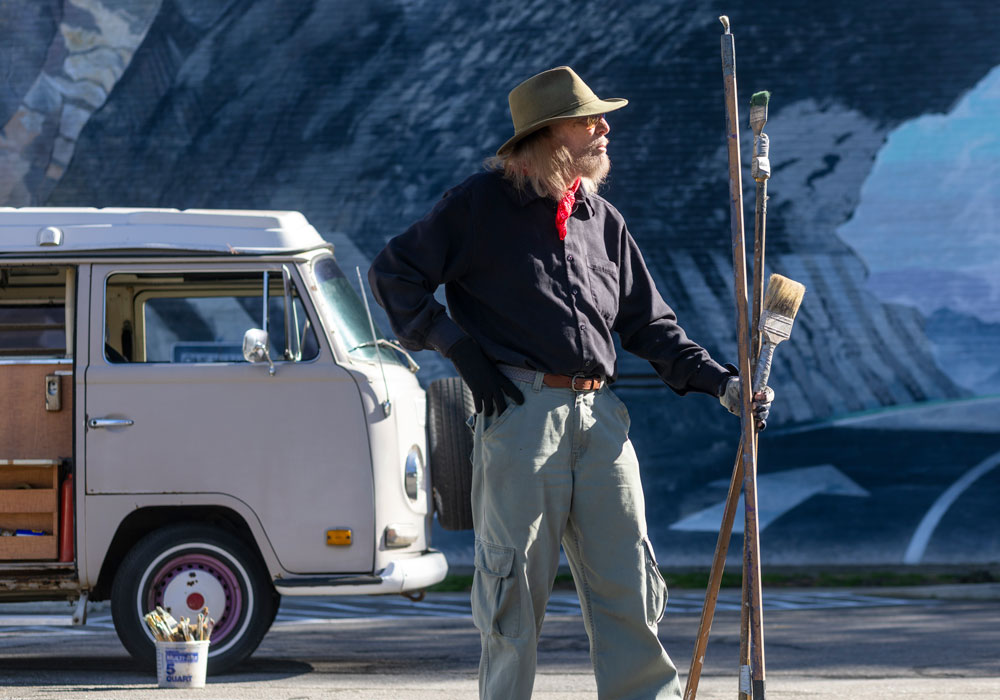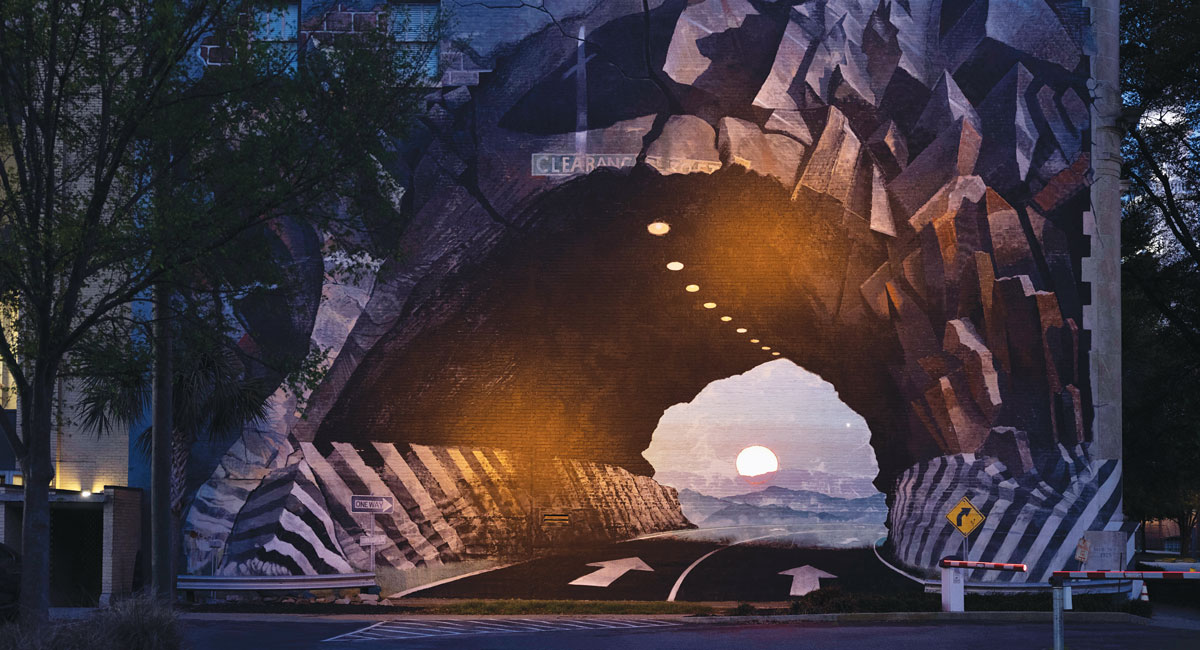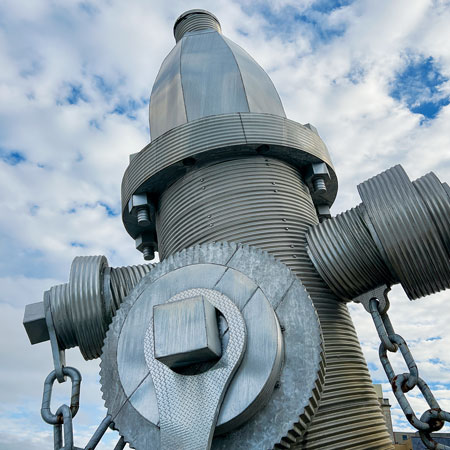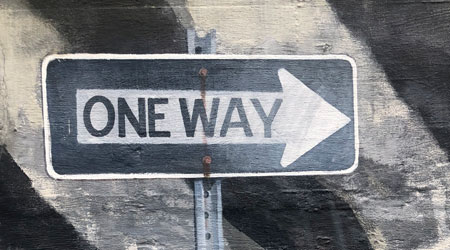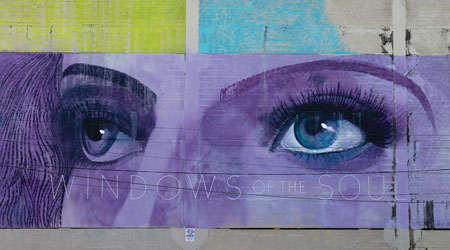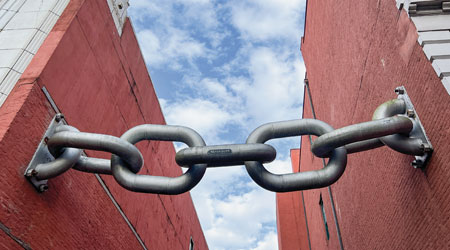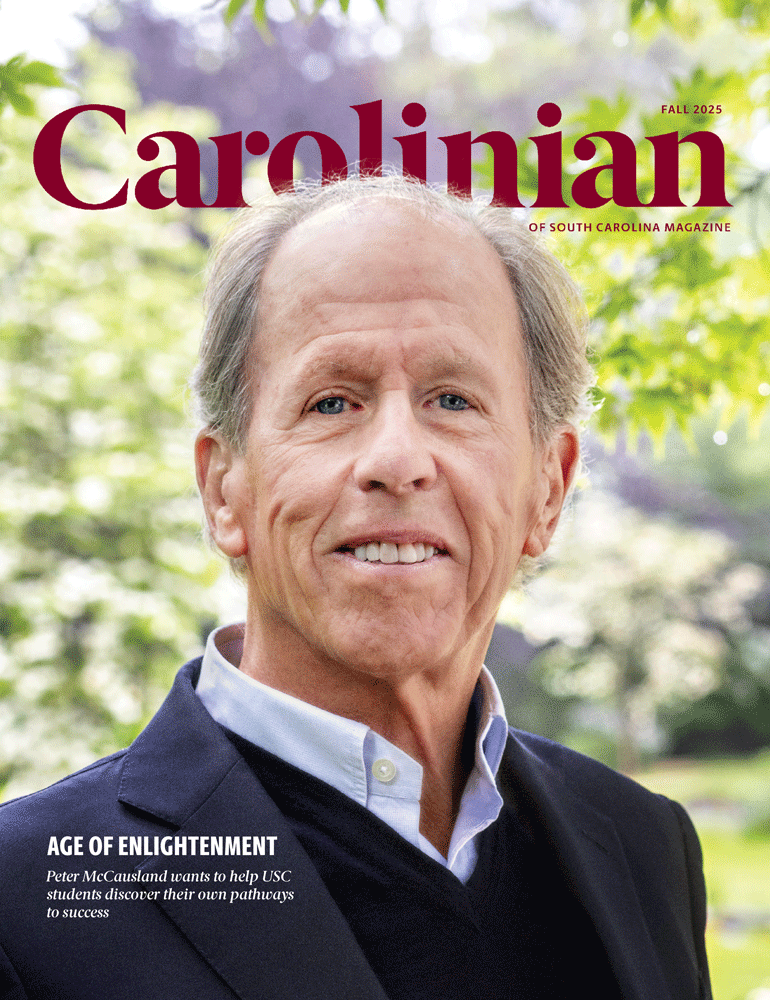Blue Sky begins a conversation about his six-decade career as an artist this way: “I should have been an engineer.”
He swears he’s not joking. He built rockets as a kid. As a college student, he did maintenance on jet fighters at McEntire Joint National Guard Base. A jet propulsion engineer would have been a better — and certainly more lucrative — career path, he says.
But think what Columbia would have lost if Blue Sky had not filled the public arena with color and whimsy and boldness and giant pieces of art that have become Capital City landmarks.
In just a couple square miles surrounding downtown, Sky’s mark is everywhere. There’s Rubble Without a Cause, a mural behind Groucho’s in Five Points. There’s Neverbust, a large steel chain connecting two historic buildings on Main Street. There’s Fleeting Glance in the Vista and the Adopt Us dog and cat at the city’s animal shelter on Shop Road. Until recently, there was Busted Plug, an 8,000-pound sculpture on Taylor Street.
And then there’s perhaps his best-known must-see piece: Tunnelvision.
Located on the north wall of a former bank at Marion and Taylor streets, the three-story, 75-foot wide mural debuted in 1975. He built a one-man mobile scaffold he called the Sky-Car to reach it, and it took more than a year to paint, using about 25 gallons of exterior acrylic latex enamel and a brush attached to the end of a 6-foot stick. Sky created an optical illusion of depth, making the wall appear like a three-dimensional tunnel large enough to drive a car through.
It drew rave reviews when it was unveiled, and quickly became a staple on the list of must-sees for visitors to Columbia. It even made People magazine in February 1976.
Blue Sky’s mural Tunnelvision located at the corner of Marion and Taylor streets in downtown Columbia.
“Even sober drivers blink and often screech to a halt as the familiar old Federal Land Bank in downtown Columbia, South Carolina, comes into view,” wrote the magazine reporter. “There before astonished eyes is a veritable mirage: a tunnel hewn out of mountain rock, through which a clearly marked highway curves off to a brilliant orange sunset. . . The reaction to ‘TUNNELVISION’ ranges from cheers to puzzlement. No one has tried to detour through the tunnel — yet. But there have been near crashes as motorists gawk at the phantasmagoria — apparently transfixed by the prospect of driving off into Blue Sky’s wild blue yonder.”
Blue Sky takes off
Sky was a creative problem-solver from a young age.
“I built rockets when I was a child,” he says. “I don’t mean the kind where you go down to a hobby shop and buy a rocket and assemble it and put a decal on it and shoot it. No, I mean, I built rockets from scratch. Explosives and fire. It was very intriguing. When I was 12 years old, I was reading highly technical books, trying to figure out all the equations that were in there.”
As a teenager, he joined the Civil Air Patrol drill team and later the Air National Guard. He spent six years as a part-time jet aircraft technician at the McEntire base and loved the work.
But he also was interested in art. He started drawing as soon as he was old enough to hold a crayon and won several art and poster contests in middle and high school. He excelled in art class at Columbia’s Dreher High School, where he won $5 in a contest to design the school’s Blue Devil mascot that is still used today. His teacher, who had studied art in New York, recognized his skill and even provided him with a small personal studio near the art room.
He wasn’t too motivated in his other classes, though. “My guidance counselor came in when I was a senior in high school,” he says. “She said, ‘You know, you’re failing about everything.’ I said, ‘I know.’ And she said, ‘But you’re doing very well in art. Why don’t you become an artist?’ And I said, ‘I never thought about that!’”
The next step was the University of South Carolina, where he studied under Edmund Yaghjian, an artist, professor and department head. Sky earned his bachelor’s degree in art in 1964, then studied at the University of Mexico in Mexico City and at the Art Students League in New York City. At the Springs Mills Show in 1964, his work was chosen as “best of show” among the 700 participating artists by the curator of modern art at New York’s Metropolitan Museum of Art. He worked in commercial art in New York City for a while but eventually found his way back to Columbia.
“There’s not a resurgence. This is a ‘surgence.’ Public art didn’t even count. It was just considered street stuff, you know. The museums didn’t respect it. It didn’t have any classification.”
He earned a master’s in art education from USC in 1970, but he knew his future would not be in the classroom or teaching studio. “By the time I got through with my master’s, I had figured out that I didn’t want to teach,” he says. “I wanted to do big public projects. I love that big work. I like the size of it. And I like doing it where I’m the one that’s making all the decisions.”
He proposed several projects to Columbia before he started Tunnelvision, which wasn’t an easy sell to the city or the building owners. But he kept pushing. That’s been the case with most of his public art projects, he says, with people not sure they want to turn a wall or building into a showcase. That’s changed around Columbia in recent years, but Sky bristles at the suggestion that there is a resurgence of public art.
“There’s not a resurgence. This is a ‘surgence,’” he says. “Public art didn’t even count. It was just considered street stuff, you know. The museums didn’t respect it. It didn’t have any classification.” Still, he will admit to playing a role in the city’s acceptance of public art. “I’m kind of a pioneer, I guess you could say that.”
But there is more to Sky’s art than big public pieces. Lynn Sky, his wife and agent, met him 42 years ago at the old Richland Library on Sumter Street. She wanted to open an art gallery and had been trying to contact Blue Sky about representing him, but his telephone had been disconnected. When she recognized him at the library, she introduced herself.
She became his agent in 1981, the couple married in 1991, and they have worked as a team for decades, Lynn Sky operating art galleries that specialize in Blue’s art, including the Blue Sky Gallery, a long-time mainstay in Five Points. Sky’s gallery is now in the historic Arcade Building on Columbia’s Main Street.
“He has such original ideas,” says Lynn. “All the years I’ve watched him paint I’ve watched the whole state be influenced by his style of art.”
And his ideas have been well-received beyond South Carolina as well. Blue Sky’s work has been exhibited at museums and galleries worldwide, from the Chicago Museum of Contemporary Art to Stockholm, Sweden’s Nationalmuseum, and he has been featured in dozens of publications, from Newsweek and Southern Living to the London Daily Mirror.
“One of the things that always surprised me when I had the art gallery was how few people realize that he even did easel paintings or paintings out on location, which is really his bread and butter,” says Lynn. “He’s totally made his living on his fine art since 1971. Most of the murals he’s done for very little money, or he’s financed it himself.”
And, at 84, he is still working, still taking on projects, still critiquing his own work. In February, he was back at Tunnelvision, giving the mural a refresh as it approaches its 50-year anniversary. It’s not the first time he has applied fresh paint. Over the past half century, Sky has revisited the mural every 10 years or so, once repainting it entirely, transforming the original blue-green hue to the earth tone palette you see today.
But some things haven’t changed. He’s still driving the same Volkswagen van that served as his mobile studio when he first painted it, and it’s still filled with paints and makeshift brushes and rollers mounted on long sticks. He easily spots the imperfections, the faded colors, the peeling spots, so he was excited by the opportunity to bring back the mural’s original luster.
“It means a lot to be able to come back and work on this,” he says. “Because I can’t stand to see it in a state of disgrace. It means a lot to work on it again.”
See Blue Sky at work and learn more about his artistic approach.
